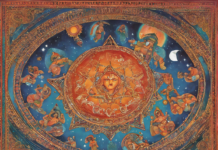Introduction
“The Tiger in the Zoo” is a renowned poem penned by Leslie Norris that reflects on the captivity of a majestic tiger in a controlled environment. The poet delves into the conflicting emotions that arise when observing a wild creature confined within the constraints of a zoo. This insightful analysis will explore the themes, emotions, and poetic devices employed by Norris to convey the plight of the tiger and the impact it has on the onlooker.
Summary
The poem opens with a depiction of the tiger pacing back and forth in its cage, embodying restlessness and a yearning for freedom. It is described as being “still beautiful,” despite its captivity, showcasing the inherent grace and power of the creature. The speaker acknowledges the tiger’s predatory nature, highlighting its primal instincts and the stark contrast between its natural habitat and the artificial setting of the zoo.
As the poem progresses, the speaker delves into their emotional response to witnessing the tiger in captivity. They feel a sense of empathy and sorrow for the animal, recognizing its subdued existence within the confines of the zoo. The tiger’s eyes are described as “fierce” yet “bleak,” conveying a sense of resignation and longing for the vast expanses of the wild.
The final stanza captures the profound impact of the tiger’s captivity on the speaker. They are haunted by the image of the pacing creature, unable to shake off the feeling of despair and confinement that permeates the scene. The poem concludes with a poignant reflection on the inherent freedom of the tiger, juxtaposed against its current reality of confinement and captivity.
Analysis
1.Themes:
– Freedom versus Captivity: The central theme of the poem revolves around the juxtaposition of freedom and captivity. The tiger symbolizes the untamed wilderness and primal instincts, while the zoo represents confinement and control.
- *Empathy and Compassion*: The speaker's emotional response highlights themes of empathy and compassion towards the plight of the tiger. They acknowledge the inherent beauty and power of the creature, while also recognizing the despair of its captive existence.
-
Imagery:
-
Visual Imagery: The poet utilizes vivid visual imagery to depict the tiger’s physicality and surroundings. Descriptions such as “pacing” and “fierce eyes” evoke a sense of movement and intensity.
-
Symbolism: The tiger serves as a powerful symbol of strength and wildness in contrast to the sterile environment of the zoo. Its confinement symbolizes the loss of freedom and natural habitat.
-
-
Poetic Devices:
-
Repetition: The repetition of the tiger’s pacing emphasizes its restless nature and yearning for liberation. This literary device reinforces the sense of captivity and captivity.
-
Alliteration: Norris employs alliteration in phrases such as “fierce yet bleak” to create a rhythmic and melodic quality to the poem. The juxtaposition of contrasting adjectives enhances the emotional depth of the tiger’s portrayal.
-
-
Tone and Mood:
- The tone of the poem oscillates between admiration for the tiger’s beauty and sadness for its captive state. The mood shifts from reflective to somber, evoking a sense of melancholy and contemplation in the reader.
Frequently Asked Questions (FAQs)
- What is the symbolic significance of the tiger in the poem?
-
The tiger symbolizes freedom, power, and the untamed wilderness. Its captivity in the zoo serves as a metaphor for the loss of natural habitat and the constraints imposed on wild creatures.
-
How does the poet convey the emotions of empathy and sorrow towards the tiger?
-
The poet utilizes vivid imagery, descriptive language, and emotional undertones to evoke a sense of empathy and sorrow in the reader. The speaker’s reflective tone and observations highlight their emotional response to the tiger’s plight.
-
What is the impact of captivity on the tiger as depicted in the poem?
-
The poem conveys the profound impact of captivity on the tiger, emphasizing its restlessness, longing for freedom, and sense of resignation. The contrast between the tiger’s innate wildness and its confined existence highlights the emotional and psychological toll of captivity.
-
How does the poem explore the theme of freedom versus captivity?
-
The poem juxtaposes the tiger’s natural instinct for freedom with its enforced captivity in the zoo. Through vivid imagery and expressive language, the poet underscores the contrast between the untamed wilderness and the artificial confines of the zoo.
-
What role does empathy play in the speaker’s perception of the tiger?
-
Empathy serves as a key emotion that shapes the speaker’s perception of the tiger. The speaker’s ability to empathize with the captive creature underscores their compassion and understanding of the tiger’s predicament.
-
How does the poet use imagery to evoke the tiger’s physical presence in the poem?
-
The poet employs visual imagery, such as the tiger’s pacing and fierce eyes, to evoke the creature’s physicality and intensity. These vivid descriptions bring the tiger to life within the confines of the poem.
-
What effect does the repetition of the tiger’s pacing have on the reader?
-
The repetition of the tiger’s pacing serves to emphasize the creature’s restlessness and longing for freedom. This literary device creates a sense of movement and urgency, drawing the reader into the tiger’s emotional state.
-
How do the conflicting emotions of admiration and sorrow shape the speaker’s perspective on the tiger?
-
The conflicting emotions of admiration for the tiger’s beauty and sorrow for its captivity create a nuanced portrayal of the speaker’s perspective. This duality of emotions underscores the complexity of human-animal interactions and the ethical considerations of captivity.
-
What is the significance of the tiger’s “fierce yet bleak” eyes in the poem?
-
The description of the tiger’s “fierce yet bleak” eyes conveys a sense of inner turmoil and resignation. The juxtaposition of these contrasting adjectives highlights the emotional depth and complexity of the tiger’s gaze.
-
How does the poem’s conclusion leave an impact on the reader?
- The poem’s conclusion leaves a lasting impact on the reader by highlighting the lingering sense of despair and confinement that the speaker experiences. The haunting image of the pacing tiger resonates with the reader, prompting reflection on the themes of captivity and freedom explored throughout the poem.









